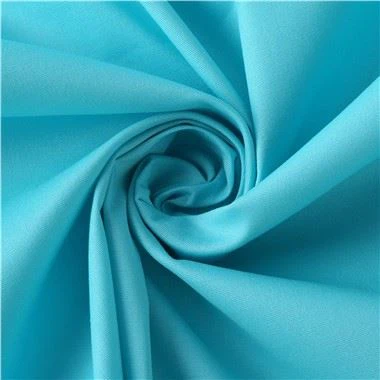How to Identify Whether a Fabric is Made of Chemical Fibers or Natural Fibers?
May 08, 2025
Identifying whether a fabric is made of chemical fibers or natural fibers can typically be done by observing its appearance, feeling its texture, burning it to smell the odor, examining it under a microscope, or using a dissolution method.
Observation Method
Natural Fibers: Generally, they have a more natural and soft appearance, with possible irregular textures or color variations. For example, cotton fibers are usually white or light yellow in color, with natural twists on the surface; wool fibers have natural curls and uneven thickness; linen fibers are coarser, with distinct longitudinal stripes.
Chemical Fibers: They usually have a more uniform shape and consistent color, with a smooth surface and even fiber thickness. For instance, polyester and nylon fibers have very smooth surfaces, high gloss, and sometimes a plastic-like texture.
Touch Method
Natural Fibers: They feel soft and comfortable, with good skin-friendliness. Cotton fibers are soft and slightly elastic, with strong moisture absorption, giving a dry feel; wool fibers feel warm, fluffy, and highly elastic, quickly rebounding after being squeezed; linen fibers feel slightly stiff and rough but have a unique coolness.
Chemical Fibers: They usually feel smooth to the touch. Some chemical fibers, such as polyester and nylon, feel stiff and have good elasticity but lack the softness and fluffiness of natural fibers. Acrylic fibers may feel soft, but compared to wool, their elasticity and fluffiness are different, and their warmth retention is inferior.
Burning Method
Natural Fibers: The smell and residue from burning differ significantly from chemical fibers. Cotton burns with a yellow flame, emitting a paper-like odor, leaving behind soft, gray ash; wool burns with a smaller flame, producing a burnt feather smell, and forms black, brittle beads; linen burns with a yellow flame, emitting a hay-like odor, and leaves grayish-white ash.
Chemical Fibers: The burning characteristics vary. Polyester burns with a yellow-white flame, black smoke, and a distinctive aromatic smell, leaving behind black, hard lumps; nylon burns with a blue flame, white smoke, and a celery-like odor, forming white or light brown hard lumps; acrylic burns with a white flame, black smoke, and a pungent smell, leaving behind black, hard beads.
Microscope Method
Natural Fibers: Under a microscope, they exhibit unique morphological features. Cotton fibers have a kidney-shaped cross-section with a central cavity and natural twists longitudinally; wool fibers have scales on the surface and a round or oval cross-section; linen fibers have a polygonal cross-section with a central cavity and longitudinal nodes and stripes.
Chemical Fibers: Their morphology under a microscope is more uniform. For example, polyester fibers have a round cross-section and a smooth longitudinal surface; nylon fibers also have a round cross-section and a smooth surface; acrylic fibers have a dumbbell-shaped or round cross-section with longitudinal grooves.
Dissolution Method
Natural Fibers: Different natural fibers dissolve differently in various solvents. For instance, cotton fibers do not dissolve in common organic solvents at room temperature but dissolve in concentrated sulfuric acid; wool fibers gradually dissolve in alkaline solutions.
Chemical Fibers: Their solubility is also distinctive. Polyester fibers do not dissolve in common organic solvents or dilute acids and bases but dissolve in specific solvents like a mixture of phenol and tetrachloroethane; nylon fibers dissolve in formic acid or concentrated sulfuric acid. Observing how fibers dissolve in different solvents can help identify their type.







